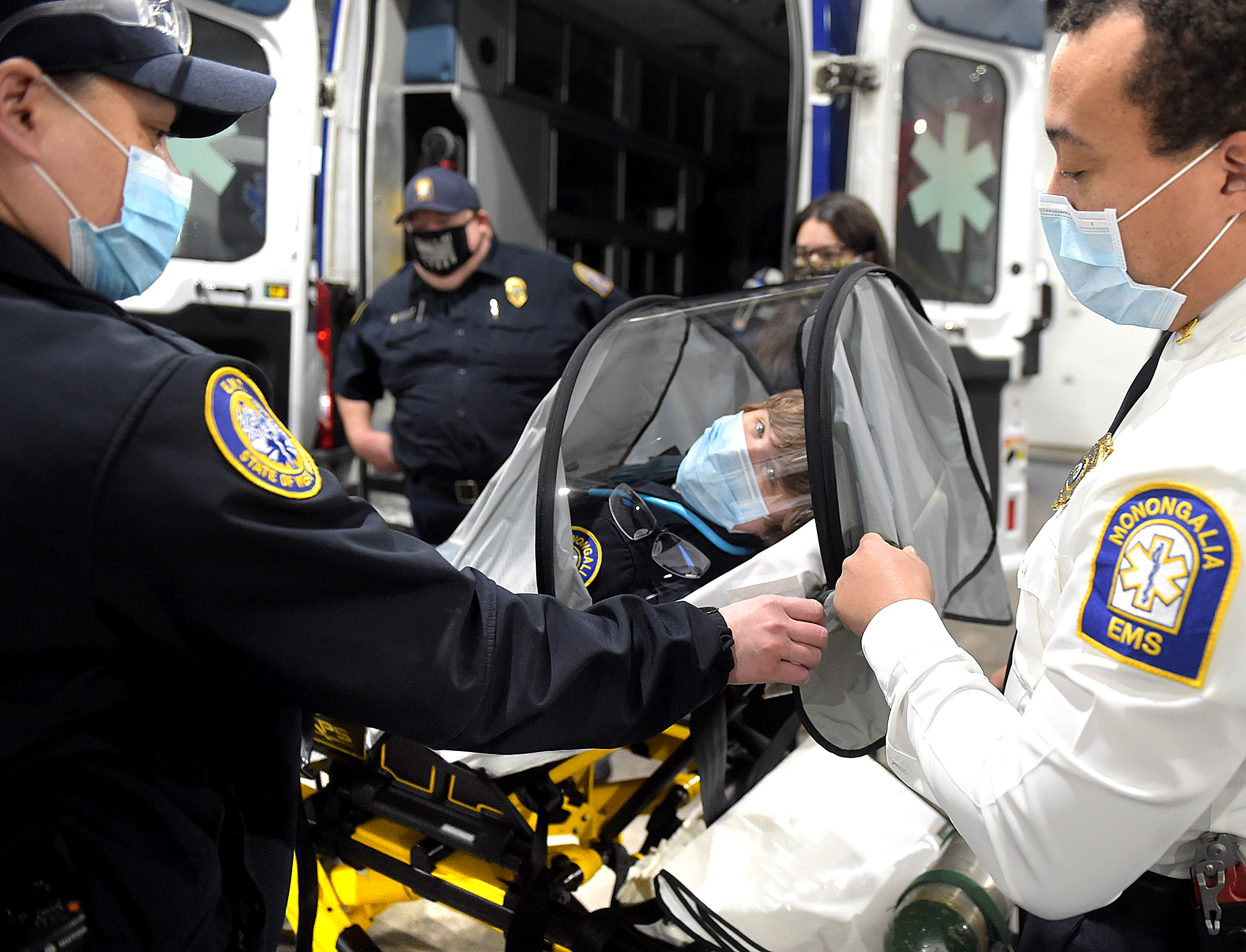MORGANTOWN — When Monongalia County residents have a medical emergency, they count on Mon EMS to show up.
Now Mon EMS personnel are hopeful the county’s voters will show up for them in November.
Mon EMS Executive Director Forest Weyen told the Monongalia County Commission on Wednesday that the agency intends to place an excess levy before the voters in November.
The details of that levy proposal are still in the works.
“It’s no secret that EMS, in general, is in crisis,” Weyen said, noting Mon EMS is facing the same issues that are shuttering EMS services nationwide.
And those issues are numerous, starting with how EMS agencies are reimbursed for services.
If an ambulance shows up, provides aid at the scene but doesn’t transport a patient, there is no reimbursement.
If transport is provided but the patient is using Medicaid or Medicare, the allowable reimbursement is capped and the remainder has to be written off by the EMS agency. These patients make up 74.4% of the transports provided by Mon EMS.
Weyen pointed out that of the agency’s $12.3 million budget, $6.8 million comes through patient revenue and reimbursement.
Since the new Mon EMS was formed in a merger of Mon Health System and WVU Medicine in 2019, the two health systems have each financially supported the venture to the tune of $2.3 million annually.
While West Virginia State Code mandates counties make ambulance services available, it provides no funding mechanism to do so. The result is many counties are being left without service. Weyen noted two volunteer services in Preston County have folded in the past year.
And as funding gets tighter, wages stagnate. Couple noncompetitive pay with the stress of the job — particularly coming off two years of COVID-19 — and people are leaving the profession in droves.
Weyen said the Mon EMS board passed a “significant wage increase” in December that brought pay up to $17/hour for EMTs and $23/hour for medics.
Even so, the agency is more than 25 people short of hitting its staffing goal.
“The days of being able to go and serve people and go home are decreasing, because now it’s constantly a COVID level,” Weyen said, pointing out a 20% increase in calls over the last year. “You’re dealing with massive amounts of people, lots of stress, mental issues, addiction issues, homelessness. We are the safety net for all that. It’s been very difficult.”
It takes about 6.2 transport calls per day to make an ambulance financially viable. Based on Mon EMS data, two of the seven zones served by the agency, downtown Morgantown and Evansdale, hit that mark. Blacksville, for example, has .8 calls per day.
Regardless, the personnel and vehicle have to be ready to respond when needed, 24 hours a day.
“We don’t even think about EMS until it’s needed, and then you want it immediately,” Commission President Tom Bloom said. “That’s what we’re talking about today.”
Mon Health President and CEO David Goldberg said support from the health systems would not go away if a levy were passed.
Members of the commission said the county, too, intends to be a partner in supporting EMS, levy or no.
Delegate Joe Statler, R-Monongalia, said he’s hopeful the state will get on board as well.
Statler chairs the West Virginia House of Delegates Committee on Fire Departments and Emergency Medical Services. He started warning the commission about the state of EMS services last fall.
Statler said three bills aimed at addressing these issues died during the current legislative session.
“When I came in here last fall and met with you, I’d become keenly aware of how bad this situation was — I thought. I didn’t even have an idea. When we went statewide and started looking at things, I’m telling you, this is a huge, huge issue for the state of West Virginia,” Statler said.
In other county news, the commission ended its mask mandate for common areas within county facilities.
Elected officials can continue to enforce masks within their offices at their discretion.
TWEET @DominionPostWV




